2016 Ford Mustang EcoBoost Fastback Premium Review

There are some things in life you just don’t do.
Wearing sweatpants to a white-tie dinner would be a major faux pas (we don’t care that your favorite pair has something sassy printed on the backside). Likewise, you’d never tell parents their newborn baby resembles Iggy Pop.
Similarly, muscle cars are supposed to have belligerent styling and powerful V8 engines that send irresponsible amounts of torque rearward for maximum hoonability. This is just the way things are supposed to be. We don’t understand how gravity works, yet we accept its effects without question.
There are unwritten rules that govern the auto industry and universe alike. But what happens when Ford drops a turbocharged four-banger under the hood of its legendary Mustang? Well, you might think the very fabric of spacetime would combust like a swimming pool full of diesel fuel, but you’d be wrong.
Economy and Boost Aren’t Mutually Exclusive
This isn’t the first time Dearborn has followed this battle plan, so rest assured the galaxy isn’t going to ignite, implode or otherwise self-destruct like the Soviet Union’s moon-landing program. The SVO ‘Stang came with just such an engine back in the mid-1980s.
FAST FACTS
| Engine: | 2.3-liter turbocharged EcoBoost four-cylinder |
| Output: | 310 horsepower, 320 lb-ft torque |
| Transmission: | Six-speed automatic |
| Fuel Economy: | 21 miles per gallon city, 32 highway, 25 MPG combined (11.0 L/100 KM city, 7.4 highway, 9.4 combined) |
| As-Tested Price: | $34,675 including $900 in delivery fees (CAD$35,648) |
Despite sharing the same 2.3-liter displacement, that car’s powerplant is about as far from Ford’s new EcoBoost unit as a McDonald’s combo is from a Michelin-star meal. Variable valve timing, direct injection and a twin-scroll turbo help that new four-banger produce some serious kibbles and bits.
Feed it 93-octane premium gasoline and this fuel-friendly engine puts out a full 310 horsepower and 320 pound-feet of torque, more of each than you get in the Subaru WRX STI. It’s also unexpectedly efficient despite that generous stable of ponies. With a six-speed automatic transmission and 3.55 limited-slip rear-end this Mustang stickered at 21 miles per gallon city and 32 highway (11.0 L/100 km city, 7.4 highway). Combined, it’ll gallop 25 miles on a single gallon of fuel (9.4 L/100 km).
And those numbers hold water in the real world. I bettered 30 mpg (7.4 L/100 km) during my week with the car, though admittedly I spent the overwhelming amount of time on long, flat, mind-numbing highways, but still, that’s pretty remarkable.
Fun Trick Pony
This EcoBoost-four pulls with enthusiasm, despite gearing that is too tall for a sports car. It’s endowed with a chunky midsection, specifically lots of torque in the everyday portion of its rev-range. This means the car will accelerate nicely without having to visit redline, and it also means the Mustang feels completely different than a four-cylinder Camaro, its arch nemesis, which builds to a crescendo at the top of its operating range. Given a choice, I prefer the Ford’s more relaxed demeanor.
However, I wish this engine were smoother. It’s not that it feels coarse, it’s just the transmission is something of a wet blanket that’s far too eager to get it into the highest gear possible in the shortest amount of time. This causes the little EcoBoost unit to drone like an overtaxed piece of agricultural equipment. A sonorous 5.0-liter V8 this engine is not.
In top gear at 65 miles an hour, this behavior was particularly annoying as it noticeably vibrated the rear-view mirror. Go a little faster, 70 or 75, and things smooth out, but still, this behavior is incredibly annoying. There just aren’t enough power strokes per crankshaft revolution to support such tall gears. Paddle shifting into fifth gear helped smooth things out, but a manual transmission would have been much preferred.
As with other versions of the Mustang, this model feels like it’s about 18 feet wide. The car’s corners are difficult to place, but you do get used to the generous exterior proportions after a few hundred miles in the saddle.
Unlike its Chevy rival, you can actually see out of this car. The ‘Stang’s sightlines are refreshingly unobstructed. Trim roof pillars, an elevated seating position, and ample glazing contribute to this relative airiness.
But in spite of this, the car still feels heavy. With a curb weight in excess of 3,500 pounds, it certainly is.
With so much adiposity, the Mustang isn’t particularly eager or engaging. Its steering feels dense but secretive. There’s an appropriate amount of heft, but it doesn’t communicate much. You can adjust the weighting with a dashboard-mounted switch, but all it does is tweak the boost, not increase road feel, which is too bad.
Our test car featured the $1,995 EcoBoost Performance Package, which didn’t seem to make it all that sporty. This option gets you 3.55 rear-end gears, engine-turned dashboard appliques, larger brakes, unique suspension tuning with heavy-duty front springs and an upsized rear sway bar, extra gauges and 19-inch wheels with summer tires.
It’s FAST!
With EcoBoost oomph, this car provides rapid acceleration, if not scary levels of speed. Merging, passing or stoplight draggin’ are all pretty much worry-free affairs. Need to outrun a Chevy in the next lane? Just dip your right foot into the deep well of torque and watch other vehicles disappear in the rearview. No, it’s not as quick or thrilling as a Shelby GT350, but it’s not embarrassing, either.
But surprisingly one area where this Mustang is even faster than this is inside. What am I talking about?
It’s true! Ford’s Sync 3 infotainment system absolutely screams, responding to inputs as quickly as you can provide them. It runs circles around MyFord Touch, which could never dream of being this speedy.
The Verdict: 2016 Ford Mustang EcoBoost Fastback Premium Review
Priced to sell, the Mustang EcoBoost starts at less than $27,000 in the U.S. That gets you a slick manual gearbox, active noise cancellation, 18-inch wheels, a six-way power driver’s seat and more.
With the premium package, our tester was, naturally, a little bit more expensive. Out the door including $900 in delivery fees, it cost a not-unreasonable $34,675. In addition to the abovementioned performance pack, an automatic transmission added $1,195 to the base figure with a handful of other additions bringing it to that level.
So, are four-cylinder muscle cars a harbinger of the apocalypse? Like jokes about people’s disabilities, are they something that’s in very poor taste? Well, with the product Ford has presented, no. The Mustang EcoBoost strikes a nice balance between performance and efficiency. If you want the looks, dynamics and all-American heritage provided by one of these cars but can’t swing the fuel bill or insurance premiums for a GT model, this could be the perfect compromise, just don’t expect it to be as fast or smooth.
Discuss this review on our Ford Forum
LOVE IT
- Surprising Acceleration
- Real-World Efficiency
- Exterior Styling
- Sync 3
LEAVE IT
- Disinterested Steering
- Engine Drone

Born and raised in metro Detroit, Craig was steeped in mechanics from childhood. He feels as much at home with a wrench or welding gun in his hand as he does behind the wheel or in front of a camera. Putting his Bachelor's Degree in Journalism to good use, he's always pumping out videos, reviews, and features for AutoGuide.com. When the workday is over, he can be found out driving his fully restored 1936 Ford V8 sedan. Craig has covered the automotive industry full time for more than 10 years and is a member of the Automotive Press Association (APA) and Midwest Automotive Media Association (MAMA).
More by Craig Cole



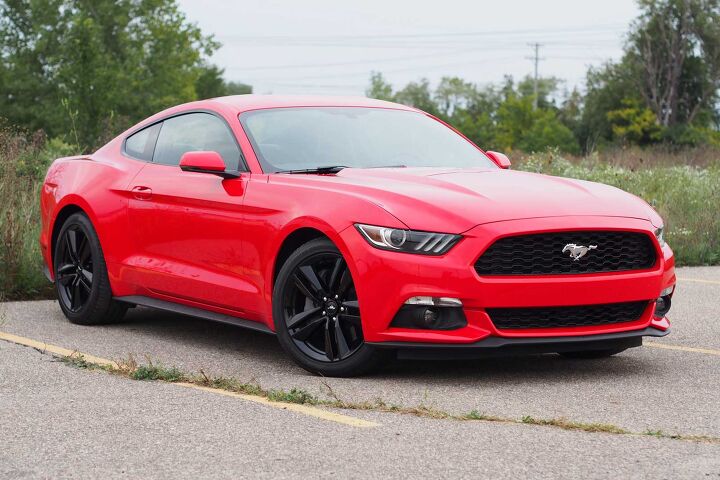
































































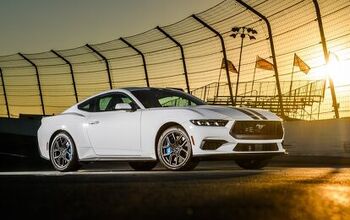

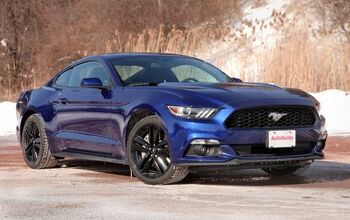
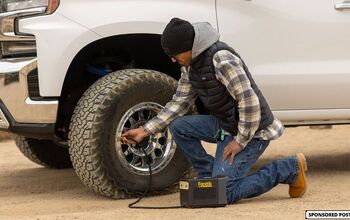




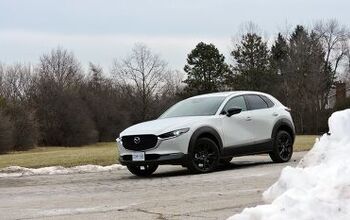
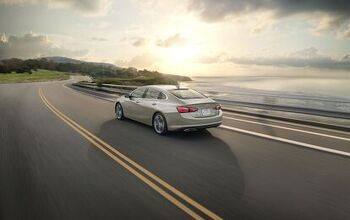
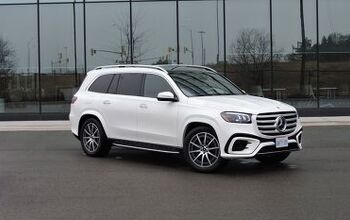

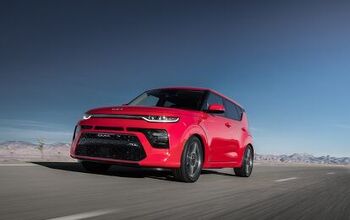
Comments
Join the conversation
Much nicer lines than that pillbox form Government Motors.
"you might think the very fabric of spacetime would combust like a swimming pool full of diesel fuel" It would resemble a large candle... it would NOT explode. Clearly you have no idea how diesel works.